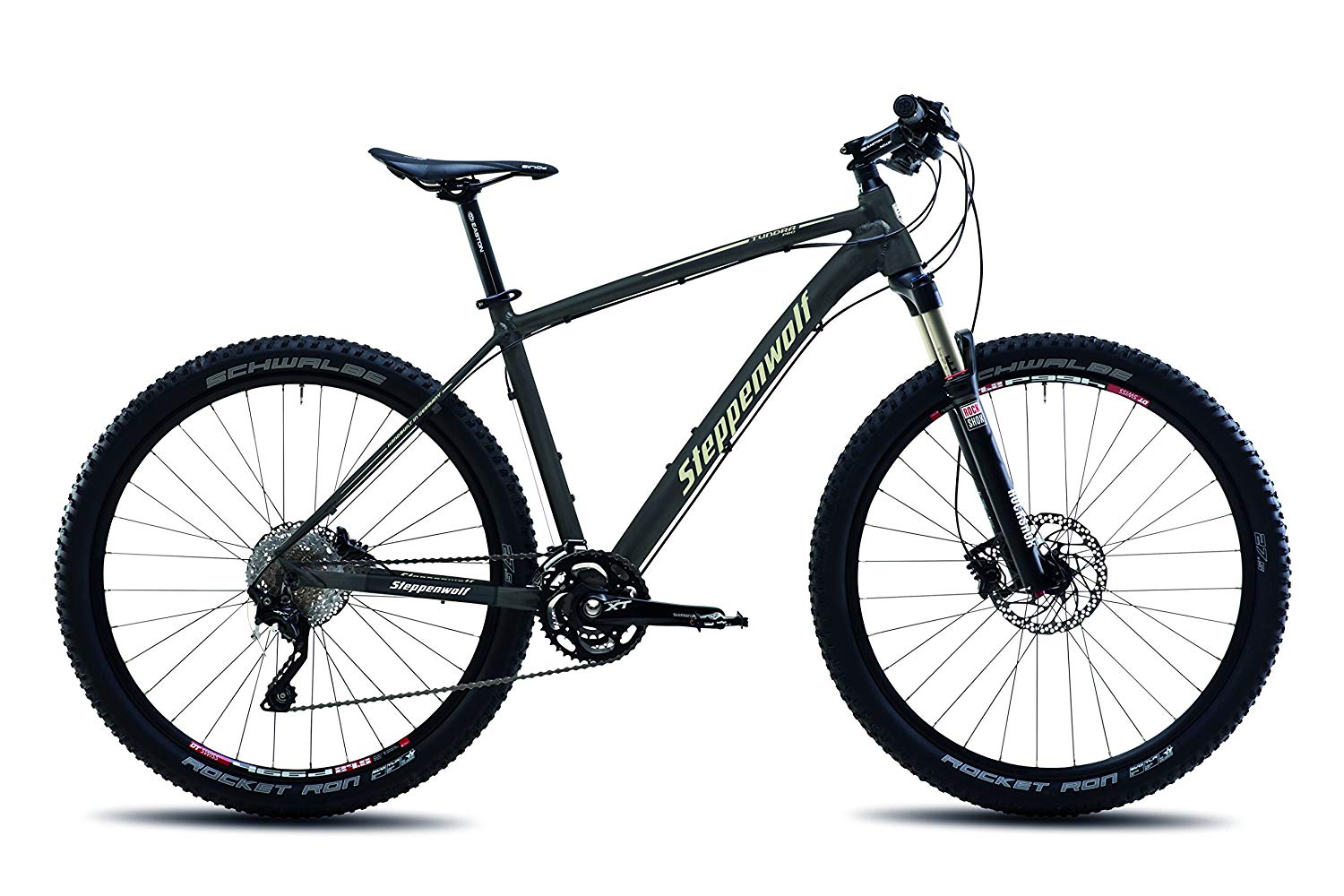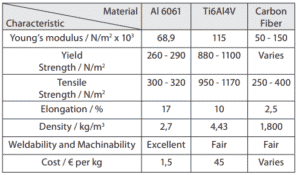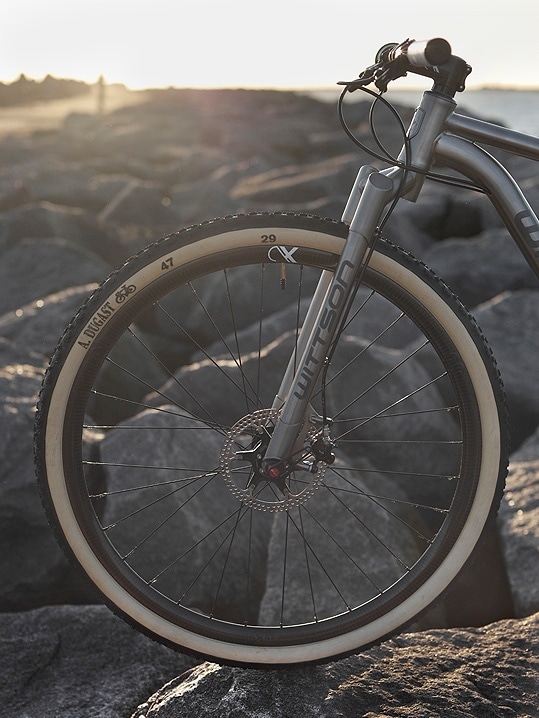Carbon Mountain Bikes vs. Aluminum – What’s Best For You?
Mountain biking can be a great way to get outside and explore new trails. There are two main types of mountain bikes: those made with carbon frames, and those made with aluminum frames. In this article, we discuss the differences between a carbon mountain bike vs. an aluminum mountain bike. At the end of this article, you will understand each key factor, including cost, weight, stiffness, durability, and damping, as well as which mountain bike frame is ideal. We will also briefly discuss other mountain bike frame materials.
When comparing carbon mountain bikes vs. aluminum mountain bikes, carbon mountain bikes tend to be lighter and cheaper. By using all carbon fiber components, the overall weight of a mountain bike can reduce by 3 to 4 pounds. Aluminum bikes are stiffer than carbon fiber bikes and are better for downhill racing. Carbon fiber bikes offer more damping, so rides are smoother.
Also, make sure to check out our related topics on:
Cost of a Carbon Mountain Bike vs. Aluminum
In terms of cost, carbon mountain bike frames are more expensive than aluminum ones. The reason for this difference is that more work is involved in making a carbon fiber bike. Currently, a carbon fiber bike costs between $400 and $4,000, while an aluminum one costs between $200 and $3,600.
Carbon mountain bikes are also more expensive than aluminum ones due to their weight. These bikes are much lighter, providing easier ascents. People who travel on downhill trails or flat terrains may prefer the heavier weight of aluminum bikes.
Despite this general trend, aluminum bikes can cost more than their carbon counterparts in some instances. Upgraded components and customized features, such as these popular mountain bike pedals, can cause the price of a bike to increase significantly. Ultimately, the cost of a bike depends on its specifications and enhancements. While aluminum may seem cheaper initially, a carbon bike may prove to be a better investment in the long run.
You might also want to consider the cost of mountain bike tires because, as we all know, you're going to encounter a flat at some point in time. When you do, be sure to reference our step-by-step guide on how to change a mountain bike tire. You'll be glad you did!

Weight of a Carbon Mountain Bike vs. Aluminum
Carbon fiber mountain bikes are lighter than aluminum or allow mountain bikes but are less durable because of high damping and torsion. This means that they sacrifice stiffness for a smoother and more comfortable ride.
Weight used to be the ultimate deciding factor in choosing a mountain bike. Bikes that weighed less were the superstars of the trail, while heavy ones occupied flat park rides. Many enthusiasts saw carbon mountain bikes as the terrain king, as they were the lightest options available.
Now, weight is no longer the only factor that’s important in choosing a bike. Many manufacturers today churn out heavier bike frames that are more durable and stable. This shift is why aluminum bikes remain popular today, especially as bikers who love downhill and more rugged rides. This aluminum MTB would be suitable for this type of trip.
Nevertheless, companies are developing and producing new carbon bike technologies to match and even supersede the durability of aluminum. Many professional racers and tour riders still prefer carbon mountain bikes, regardless of their lightweight frames.
If you’re particular about the weight of your bike but unsure whether to go carbon or aluminum, we’ve rounded up some of the best bikes available on the market today. You can decide for yourself if carbon or aluminum is for you based on the following:
| Example Bike | Weight | Material | Best Features |
| Savadeck Carbon Fiber Mountain Bike Deck2.0 MTB | 28.6 lbs - Excluding the weight of the pedals for the 15-inch frame version | Carbon fiber | Comes with a Toray T800 Carbon Fiber frame that can withstand up to 40 fractures, making it ideal for smooth uphill climbs. |
| Steppenwolf Tundra Carbon Race/ Pro/ LTD Team LTD Hardtail 29er MTB | 22.4 lbs | Carbon fiber | Extremely lightweight for its size, it’s great for cross-country rides. It is an ideal entry-level endurance MTB and racing bike. |
| Steppenwolf Men’s Tundra Pro Hardtail Mountain Bike, 27.5-inch wheels | 29 lbs | Aluminum | With aluminum MTBs averaging 30 lbs in weight, this one is quite light for its kind. It can handle steep steering and speedy downhill rides. |
You might also be interested in learning how to choose mountain bike grip shifters and what to do when a mountain bike grip shifter is stuck. Make sure to take a look at our related article to find out.



Stiffness of a Carbon Mountain Bike vs. Aluminum

Stiffness is how much your bike resists bending. The stiffer the bike, the less effort you need to control it. With a mountain bike, you are looking at two kinds of stiffness: the lateral stiffness and the stiffness of its handling. The former affects the transition of your energy from pedal to the road, while the latter determines your bike’s predictability when being controlled. Here is a carbon MTB with a high stiffness.
Carbon fiber bikes are less stiff compared to aluminum. Aluminum responds more quickly to forces on the pedals and handlebars. This quality makes aluminum mountain bikes easy to control when running through high-speed runs and encountering substantial obstacles.
Aluminum, on the other hand, has seen a resurgence in engineering development. Many models on the market, such as this one, can already meet or beat cheap carbon fiber MTBs. Manufacturers are making aluminum frame tubes a larger diameter to increase stiffness. Moreover, advances in welding and hydroforming are creating stiffer and lighter aluminum models.
In this article, in the Journal of Scripta Materialia, the authors discuss how newer materials such as aluminum reinforced with carbon nanotubes offer superior tensile strength and ductility due to synergy between carbon and aluminum alloy. Another paper in the Journal of Metalurgija analyzed Carbon vs. Aluminum vs. Titanium-Aluminum alloy and found that the alloy had the best properties for making a mountain bike frame - high yield strength, high tensile strength, minimum elongation under load, and a reasonable density (carbon fiber is extremely dense!).

Durability of a Carbon Mountain Bike vs. Aluminum

Durability is a measurement of your bike’s toughness during an impact. It should be on the top of your list when choosing an MTB. It determines your bike’s strength during hard hits and crashes. The durability and quality of your model may mean life or death for you during a challenging ride.
When it comes to impact resistance of carbon vs. aluminum mountain bikes, carbon and aluminum have different ways of responding. Carbon can crack or snap to the point of breakage. Aluminum will bend or deform when it can no longer withstand the pressure. Therefore, aluminum bikes are generally considered more durable than carbon mountain bikes.
Based on these natural reactions, aluminum is generally considered the tougher of the two materials. Here is an example of a particularly tough aluminum MTB. You can limp on a deformed aluminum bike during a race, but a cracked carbon component is no longer rideable. However, modern carbon bikes are more durable and safer to ride than earlier versions due to engineering developments. According to bikinguniverse.com, quality carbon MTBs can take up to 700 KSI (kilopound per square inch) before failing.
Overall, as long as you are confident with the specifications of your mountain bike, you have little to worry about when it comes to the durability of your bike. Carbon MTBs may snap when pushed to their breaking point, but scientists are making this breaking point a distant one nowadays. Aluminum remains dependable as ever, and it is still a great choice during races and downhill rides.
Damping of a Carbon Mountain Bike vs. Aluminum
Damping is a bike’s ability to lower the harshness of a trail ride. Bikes with efficient damping lessen the impact of rocks, tree roots, and similar obstacles.
Carbon is known for its damping effect. Since it is lower in stiffness than aluminum, carbon lessens the shock of bumps and thuds. Combined with its lightweight frame, carbon mountain bikes can take a challenging rough trail and create a smooth ride.
On the other hand, aluminum features less damping, causing more vibrations in the handlebars. On short runs, this drawback will not matter as much. If you’re the type who does cross-country trails or daredevil descents, you’re better off with a carbon MTB for maximum comfort and control. This aluminum MTB offers less damping than similar carbon MTB models.


Other Mountain Bike Frame Materials: Steel and Titanium

Considering all the factors mentioned, you might find yourself torn in choosing between aluminum and carbon as your mountain bike material. If these options don’t fit your needs, you should consider alternate materials that MTB manufacturers offer today.
Steel mountain bikes are affordable and easy to customize but are less durable because they can rust. Titanium mountain bikes are more expensive than carbon, aluminum, and steel mountain bikes but provide excellent damping and strength while also being light-weight.
Steel has been around for centuries. During the early days of mountain biking, it was the go-to material of both professional and amateur bikers. It’s durable, affordable, and easy to repair. This steel MTB is particularly affordable and useful. If a part bends or breaks, you only need to visit a welding shop for mending.
Unfortunately, steel has one weakness: rust. If poorly maintained, a steel mountain bike can rust over time, weakening its strength and resistance to impact. Due to this fatal flaw, aluminum and carbon slowly overthrew this preferred material.
In recent years, however, steel is making a comeback in the mountain biking scene. Here is an example of a steel MTB with new technology. Many new, small-scale manufacturers are reviving it to create handcrafted frames that stand out from the mass-produced models of today. Brands such as Cotic, Sick Cycles, and Caminade now offer steel bikes that are stronger, lighter, and faster than before.
Steel is also becoming more popular in Europe. These bikes are also available as hardtails or full-suspension models. If you desire nostalgia, European style, or a unique ride, then a steel bike might be right for you.

Titanium, meanwhile, is a material for the elite. Popularly known as an aerospace material, manufacturers combine it with other metals to create jaw-dropping bikes with steep prices. MTBs made of titanium alloys are virtually rust-proof, thin-walled and high-strength. These metal bikes are approximately half the weight of steel and twice the strength of aluminum.
Titanium bikes offer excellent damping effects. Titanium lessens the harshness brought about by trail irregularities better than most materials, making your ride extremely comfortable. For endurance or multi-terrain rides, these bikes are ideal because they can outlast most, if not all, materials.
Titanium is currently the cream of the crop when it comes to MTB materials. The only drawback of titanium is its price. With titanium frames alone costing more than a thousand dollars, only racing professionals or seriously wealthy amateurs typically purchase titanium mountain bikes. This titanium mountain bike stem demonstrates the price of titanium upgrades and parts.
Nevertheless, you can choose to combine a titanium bike frame with a carbon fork, such as this one, if you want the best with a slightly lower price tag. This combination allows you to use the remarkable damping effect of carbon with the supremacy of a titanium body.
Comparison Summary of a Carbon Mountain Bike vs. Aluminum
Developed initially for filaments in light bulbs, carbon fiber is now widely known as the aerospace material. It features high stiffness, high tensile resistance, and low thermal expansion. Here is an example of a premium carbon fiber mountain bike. On the other hand, aluminum is a naturally occurring malleable metal. MTB enthusiasts prefer aluminum for its low density, resistance to corrosion, and widespread availability. Aluminum mountain bikes are also sometimes referred to as alloy bikes because they utilize both aluminum and a combination of other materials. Here is an example of a high-quality aluminum mountain bike.
There are several differences between carbon and aluminum mountain bikes. These distinct elements may influence your final bike decision.
| Factor | Why Does It Matter? | Carbon Mountain Bike | Aluminum Mountain Bike |
| Cost | If you buy a cheaper frame material, you can upgrade parts of your bike to improve its performance and aesthetics. | While more expensive, the carbon mountain bike is an investment in weight. Installing even a single carbon component can reduce the bike’s mass by several pounds, allowing you to go faster on treks. | Aluminum bikes are generally heavier than carbon MTBs. However, they are more widely available and cheaper than their carbon counterparts. Some riders prefer aluminum and insist that skill and technique, not weight, determine performance. |
| Weight | Weight is often the deciding factor of many bike enthusiasts when choosing their ride. The lighter the frame, the easier it is to speed up and ascend on difficult terrains. | Carbon MTBs, such as this one, are notoriously lightweight. These bikes are helpful during climbs, descents, and rides through flat terrain trails, as carbon MTBs reduce friction and gravity. | Aluminum MTBs are heavier than carbon, but many fans swear they are the best for downhill trails. The theory is that the additional weight aids your descent performance. |
| Stiffness | Stiffness is the resistance of your bike to bending. With a stiffer bike frame, you’ll be able to control the bike’s direction and motion easier. | Carbon fiber frames provide stiffness without the addition of heft. Carbon offers more torsion, which translates to better steering power. | Aluminum bike frames are stiffer than carbon. This characteristic is ideal for racers because the low sway translates to better stability and more speed on the bike. |
| Durability | Durability is critical for MTBs in case there is a mishap or accident. The strength of your bike can mean the difference between life or death. A more durable bike will allow you to engage more difficult terrains, accumulate fewer cuts and bruises, and enjoy the sport more even in the face of danger. | Carbon MTBs can break off or fail during violent impacts because it is brittle. Many professional cyclists still prefer it because it is durable in normal circumstances. Once you damage a carbon component, it requires complete replacement. | Aluminum components are less expensive to replace compared to carbon ones. These items can endure high impacts with just a few dents and scratches. Aluminum can break down after recurrent collisions. Cracks are a major sign that it’s time to replace your aluminum frame. Customers review this aluminum MTB as a durable model. |
| Damping | Damping determines the amount of energy transferred from the bike frame to you. A bike with better damping can absorb the shocks and vibrations transmitted by rocky terrains. High-quality damping will offer comfort during long rides. Padded bike gloves, such as these, can also help alleviate bike vibrations. | Carbon frames offer excellent damping effects. It provides a more comfortable ride over rocks, tree roots, and other rough trail elements. This carbon MTB provides significant damping to soften your ride. | Aluminum frames provide less damping compared to carbon due to their stiffness. However, this characteristic protects the rider and the bike against hard impacts. |
Similarly, you might find interest in learning how to choose mountain bike pedals for grip maximization or how to install mountain bike pedal straps and toe clips. If so, be sure to take a look at our related articles for more details.
We hope you enjoyed this article discussing the differences between carbon mountain bikes vs. aluminum mountain bikes. Now you should understand each key factor, including cost, weight, stiffness, durability, and damping, as well as which mountain bike frame is ideal. We also hope that you learned more about other mountain bike frame materials.
Make sure to also take a look at our related article on choosing mountain bike grip diameter to find more information and tips. Our step-by-step guide to mountain bike grip installation will explain how to properly install those new grips on your bike once you have them and we can also tell you which mountain bike grip to purchase for numbness, so check that article out as well.
